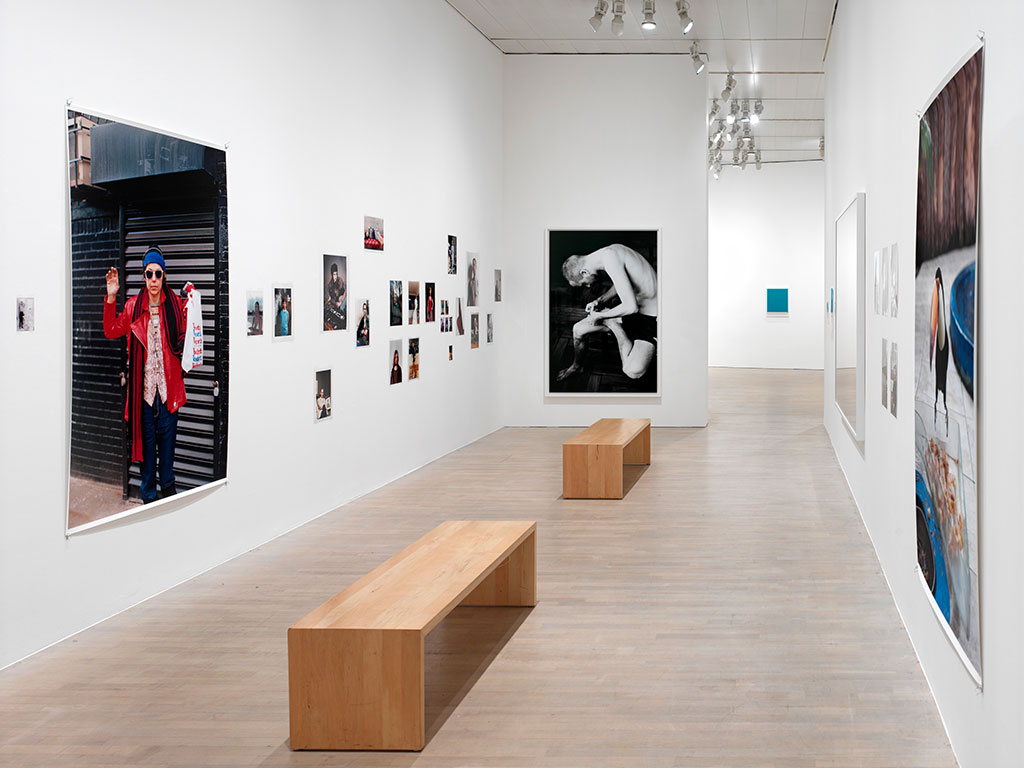The Kunstsammlung Nordrhein-Westfalen in Düsseldorf is presenting a wide-rangin overview of the oeuvre of photographer Wolfgang Tillmans. On view is a selection of works from the past 25 years by this extraordinary transgressor of boundaries in the field of photography. The artist himself has configured this presentation as an integrated installation specifically for the exhibition spaces found in the expansive basement level of the K21. Moreover, Tillmans will be showing early graphic and other works from the late 1980s for the first time anywhere.
One of the most important artists of his generation, Wolfgang Tillmans (born in Remscheid in *1968) has subjected decisive aspects of photography to further development, redefining it as an artistic medium. The works of this photographer, who lives in Berlin and London, are represented in the most important collections worldwide, and have been featured often in international exhibitions. In a provocative mixture of abstract imagery and photography that is characterized by breaks and discontinuities, his artistic work brings together the most various subjects, extending from highly personal or domestic motifs to political themes, remote locations around the world, all the way to photographic images of the starry heavens. “I create images,” says the artist emphatically, “in order to perceive the world.” The earliest works – photocopies of newspaper illustrations and of the artist’s own photographs – can be traced back to experimentation with the first digital black-and-white photocopying machines.
In the early 1990s, images and photo sequences of his friends and of young people from popular culture and the club scene – which appeared in various magazines such as i-D and Spex – brought him to the attention of a broad public. In the year 2000, Tillmans became the first non-British artist and photographer to receive the prestigious Turner Prize. Found among the spectrum of Tillmans’ artistic production alongside portraits, interiors, landscapes, astronomic photography, and still-lives are abstract image created in darkrooms without lenses, videoworks, and the so-called Truth Study Centre Tables. Like large collages, these table installations present photographs, photocopies, newspaper articles, and selected material on sociopolitical and natural-scientific topics, amplifying the thematic complexes they address to create powerful effects of resonance.
Marking out a path toward abstraction in Tillmans’s production are the in part large-format works of the Freischwimmer series, with their delicate veils of paint, as well as those of his paper-drops series, photographs of rolled pieces of paper viewed from the side. The sculptural qualities anticipated in these works become quite concrete in the Lighter series: presented in flat Plexiglas cases, the folded pieces of photographic paper now become abstract beliefs. With his digital Neue Welt (New World) images, produced on trips around the world, and now appearing in book form, Tillmans expands his multifaceted oeuvre into a new dimension. The artist makes clear that his fundamental interest lies – alongside (material) aesthetic aspects – on sociopolitical themes such as commerce, the movement of commodities, and economic structures, and on hypermodern architecture as an expression of these new developments. At the center of Wolfgang Tillmans’s production stands the question of the image and the controversy centered on it, on how meaning emerges from a piece of paper. All of the works in the exhibition are analog images. This means that they depict reality, are not computermanipulated, and were produced – at least initially – by allowing light to strike a photosensitive surface, a piece of film, or a sensor. Subsequently, however, Tillmans processes his images in highly diverse ways, whether in the form of photocopies, the digital or classical analog print, or in some instances through photochemical processing or even manually-executed alterations.
Through his works, Tillmans has not only discovered a new image language for photography, but at the same invented an unmistakable form of presentation that transforms each exhibition into an integrated, site-specific installation. His exhibition praxis – which involves arranging framed photographs alongside unframed ones, C prints alongside photocopies and inkjet or laser prints in the most diverse formats, some of them mounted directly on the walls, to form complex and at the same time rigorous wall installations – has proven a formative influence for many younger artists. The same is true for his unconventional approach to photography, which he consistently explores for the sake of new pictorial pictorial possibilities and variations in relation to the medium’s materiality and techniques, presenting his results simultaneously in exhibitions, artist’s books, and magazines.

